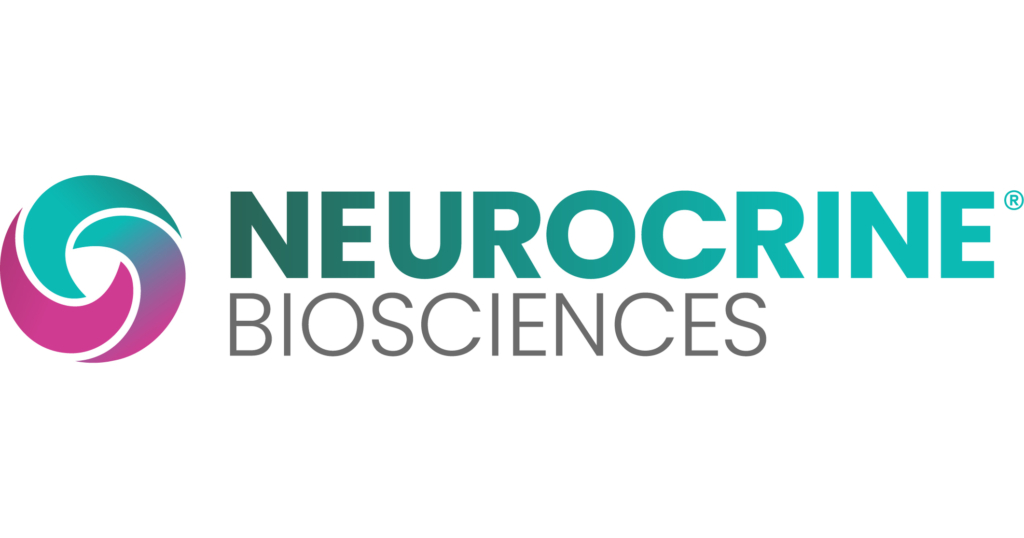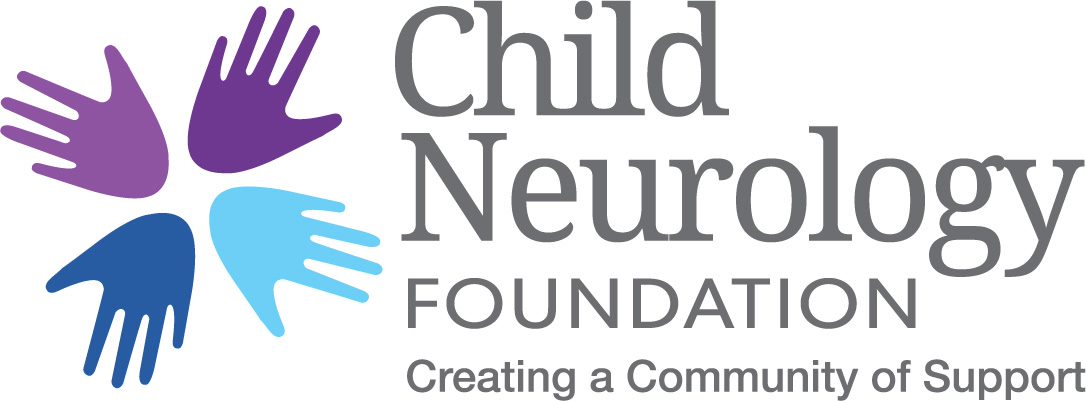

Author: Priscilla Chee, MD, Loma Linda University
Reviewed: May 2021
SUMMARY
Headaches are very common in childhood. Most of the time, children have headaches for the same reasons adults do. Just as for adults, stress or poor sleep can cause headaches. Headaches can affect a child’s functioning at school and play if they are frequent or severe. Even so, headaches are usually not due to serious illness.
Some children with headaches experience only head pain. Other children have other symptoms along with their headaches, such as:
- Nausea or vomiting
- Sensitivity to loud noises
- Vision changes
Most headaches can be treated effectively with over-the-counter pain medication. Practicing healthy habits like drinking enough water and getting regular sleep can help prevent headaches.
Even if headaches are infrequent, it is important to have an effective headache treatment plan in place. If left untreated, headaches can become more difficult to treat and eventually cause disability.
JUMP TO
Disorder Overview
DESCRIPTION AND CAUSES
Primary Headache
Tension headaches and migraines are the most common types of headaches in children. These kinds of headaches are called primary headaches. Primary headaches are not a symptom of another, more serious disease.
Certain genes make a person’s brain more sensitive to headaches. Most of the time, a child is more prone to headaches because of genes inherited from one or both parents. Even in these cases, other factors are usually needed to trigger headaches.
Triggers include:
- Not drinking enough water
- Getting not enough sleep, inconsistent sleep, or poor-quality sleep
- Skipping meals
- Stressors, like having trouble learning or being bullied at school
- Hormone shifts during puberty or the menstrual cycle
There are other types of primary headaches besides tension headaches and migraines. An example is cluster headache. However, these are rarely seen in children. It is not fully understood why people get these other kinds of headaches. It is suspected that there may be an underlying genetic component.
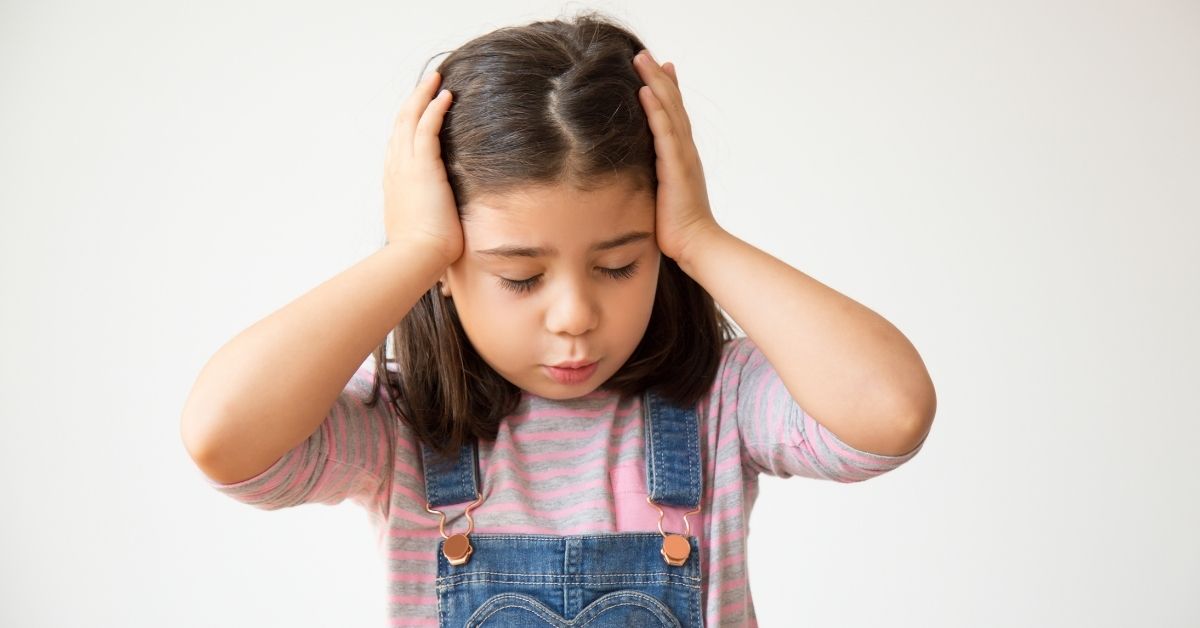

Secondary Headache
Sometimes, children have headaches stemming from other causes. These are called secondary headaches.
Things that can cause secondary headaches include:
Medicine overuse
Medicine side effects
Congenital differences in brain structure
Congenital means “present at birth.” Examples of congenital differences in brain structure include cysts or Chiari malformations. Most people born with these differences do not know they have them. They usually don’t cause problems. However, in some cases they can cause headaches or other symptoms.
In rare cases, a headache can be a symptom of a more serious illness.
Examples include:
Meningitis
Head trauma
Hemorrhage
Intracranial hypertension
Brain cancer or tumors
Seek prompt medical care if:
- The child has any of the symptoms above in addition to headaches
- Headaches become worse or more frequent over time
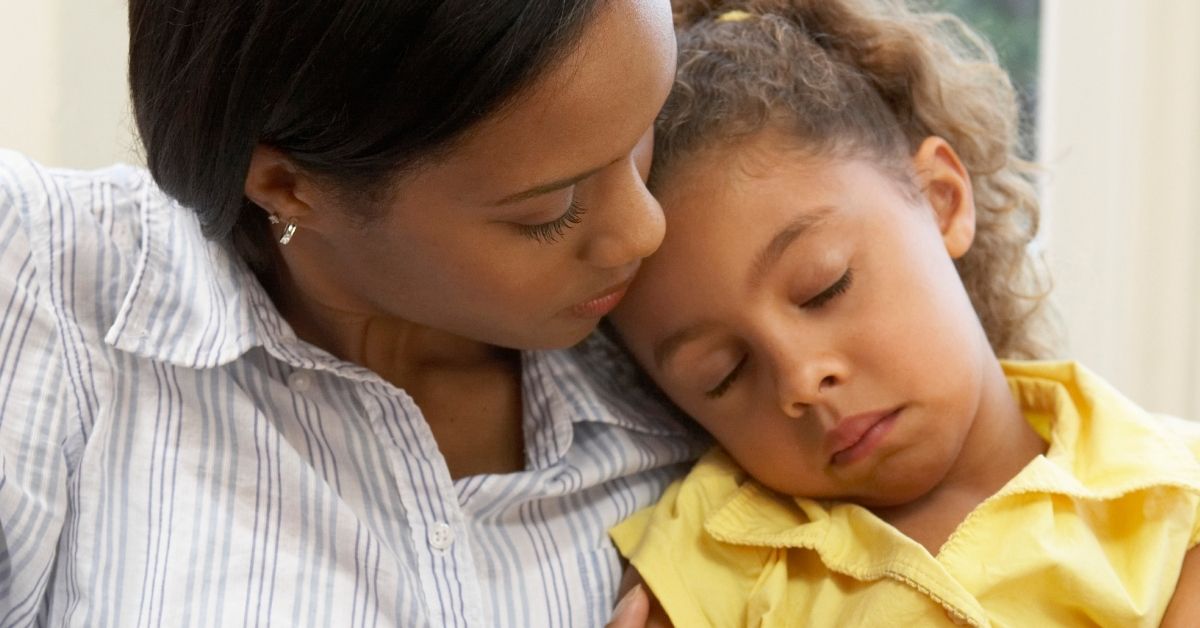

SIGNS AND SYMPTOMS
Children can get the same types of headaches adults do. The symptoms are often similar, but it can be hard for younger children to describe them.
Children’s headaches are often briefer in duration and thus dismissed. The child may not complain of headache pain initially, but may become quiet and withdraw from their usual activities.
This can make it difficult to tell exactly what type of headache they have. Most children have either tension headaches or migraines.
Migraine Headache
Even infants and very young children can get migraines or experience migraine-like conditions.
Symptoms of migraine headaches in children include:
Having the genes for migraines can cause brain sensitivity. Many children with these genes will have migraines when they grow older.
The genes can bring about different symptoms as a child grows:
Younger children
School-age children
In rare cases, migraine genes can cause older children to experience abdominal migraine. Instead of headache, the child has dull pain all over the belly. This may or may not be accompanied by vomiting, including cyclical vomiting. Other disorders must be ruled out before a diagnosis of abdominal migraine.
Tension Headache
The other common type of childhood headache is a tension headache.
The symptoms of a tension headache differ in important ways from those of a migraine:
Trigeminal Autonomic Cephalalgias
Trigeminal autonomic cephalalgias (TAC) is a category of headache that happens only rarely in children.
One common type of TAC is cluster headache. Cluster headaches appear as a series of short but painful headaches. They appear alongside other symptoms on one side of the head or face. They happen in clusters that can last weeks or months. After the clusters stop, the headaches may not happen again for months or years.
It can be hard to tell which type of TAC a child has. It can also be hard to tell a TAC apart from migraine.
Signs that suggest a TAC include:
Only one side affected
Eye symptoms
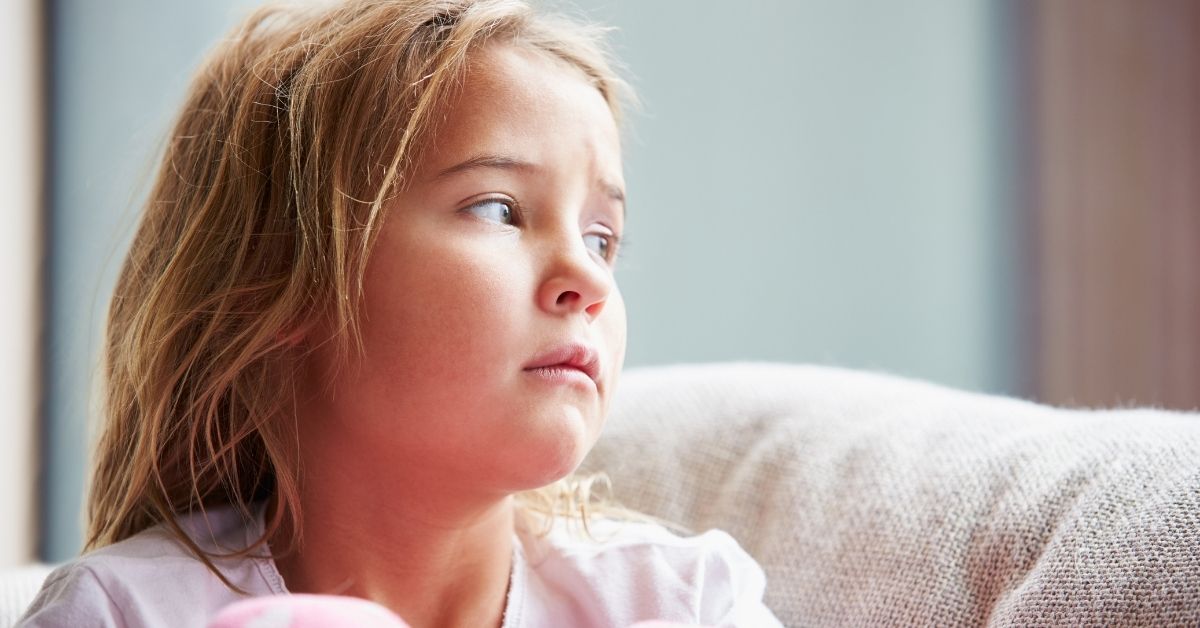

DIAGNOSIS
Childhood headaches are usually easy for a doctor to diagnose after a child describes their headaches. It is helpful to work with the child to create a diary of symptoms to bring to the appointment.
This diary should include:
- How long the headaches last
- How bad the pain is
- What treatments were tried and if they worked
- How often the headaches occur
It can also help to track other details, such as:
- The location of the pain
- What kind of pain the child feels
- Any other symptoms, such as vomiting, vision changes, or dizziness
A pediatric examination for headaches should include:
General physical examination
During this exam, the head and neck will be carefully checked for signs and symptoms of infection. The doctor will look for otitis media, tooth abscess, acute pharyngitis, and more. The doctor will also look carefully at vital signs to check for high blood pressure. The general physical exam can help determine if the headache is primary or secondary.
Neurological examination
A pediatric exam for headache might occasionally include:
Blood tests
Brain imaging
Imaging is usually not needed. However, in some cases, a doctor may recommend it. This might be because the child is too young to describe the headaches well. Or it might be that the symptoms suggest a structural or more serious cause of headache (secondary headache).
There are two primary types of brain imaging used for headache:
- Magnetic resonance imaging (MRI). An MRI takes about 90 minutes, and the child has to hold very still through the whole procedure.
- Computed tomography scan (CT scan). If the doctor suspects a serious cause or if there was recent trauma, sometimes a CT scan is done instead. An MRI may or may not be needed later.
Lumbar puncture (LP)
In rare cases, a test called a lumbar puncture may be recommended. In an LP, a needle is inserted in the middle of the spine at about hip level. This allows doctors to measure the pressure inside the head to see if it is too high or low. If the pressure is high, fluid can be drained to lower the pressure to normal. A sample of the spinal fluid can also be taken to check for infection or inflammation.
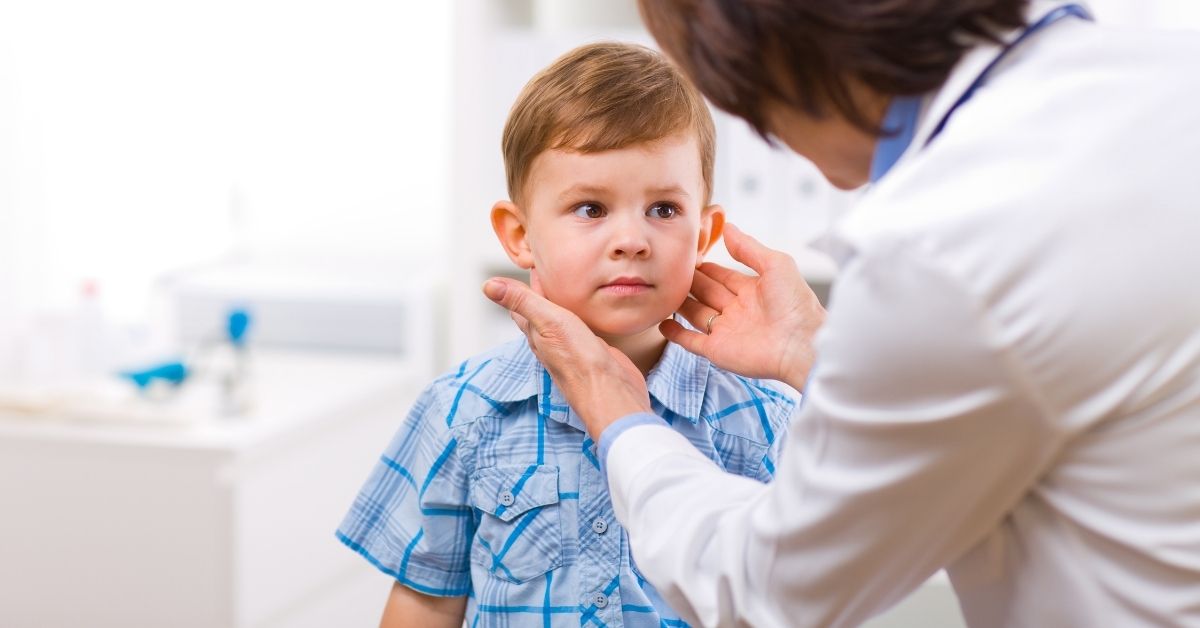

TREATMENT AND THERAPIES
Treatment depends on whether headaches are primary or secondary.
Primary Headache
For most primary headaches, the treatment depends on how frequent and how severe the headaches are.
There are two parts to most primary headache treatment plans:
- Acute treatment. This consists of medicines given when a headache starts. The goal is for the headache to stop within an hour of treatment.
- Headache prevention. This consists of things done every day to prevent headaches. The goal is for a child to have one headache or less per week.
Acute Treatment
Most headaches can be treated with over-the-counter medications such as ibuprofen, naproxen, or acetaminophen. Drinking lots of water or sports drinks together with the medicine can also help.
It is important to treat a headache as soon as possible. This is because the medicines work best if given early, when the pain is not as bad.
Medicines should be used no more than two to three days per week.
If headaches do not respond to over-the-counter medicines, a doctor may recommend prescription medicines, such as triptans. The doctor may also recommend a medicine like ondansetron to treat any nausea or vomiting the child may have with a headache.
If the headache is very severe or lasts a long time, it may be necessary to take the child to urgent care or the emergency room for further treatment. IV pain medicines, together with IV fluids, can be used to stop the headache.
Headache Prevention
Healthy Daily Habits
Many children can achieve good control of their headaches by practicing healthy habits every day. These healthy habits include:
- Drinking lots of water and other fluids. For most older children and teenagers, this is usually 8 to 10 eight-ounce glasses of fluid per day. Avoid drinks with caffeine, such as coffee and some sodas.
- Eating three healthy meals per day. A healthy meal includes lots of fruits and vegetables. Avoid skipping breakfast.
- Getting enough exercise. The American Academy of Pediatrics recommends at least one hour of activity every day for most children.
- Getting consistent sleep every night. School-aged children need between 9 and 12 hours of sleep every night. Teenagers should get between 8 and 10 hours every night. On weekends, children and teenagers should go to sleep no more than an hour later than their usual bedtime.
Controlling Stress and Worry
Most children feel worried or stressed from time to time, just like adults. Since worry and stress can trigger headaches, it’s important for children to learn healthy ways to deal with these feelings. It can help to start by practicing simple breathing exercises every night before bedtime.
For children who need more help with managing worry, counseling and special types of therapy can be useful. These special therapies include cognitive behavioral therapy (CBT) and biofeedback relaxation therapy. Both CBT and biofeedback have also been shown effective at preventing headaches.
Controlling Frequent or Severe Headaches
If a child has very frequent headaches or if the headaches are very severe, a daily prevention medication may be needed. There are many different medicines used to prevent headaches. Most of them were developed to treat other conditions first. The medicines are usually started at a low dose and increased slowly to reduce the chance of side effects.
Examples of common groups of medicines used to prevent headaches are:
Antidepressants
Anti-seizure medications
Allergy medicines
Vitamins
Treatment with daily prevention medicines is usually continued until the goal of one headache or less per week has been met for several months.
Injection Medicines for Headaches
Most headaches are controlled easily with an oral medicine treatment plan and healthy habits. If oral medicines don’t work, injection medicines may sometimes be used instead. These are rarely used in children because they are only FDA approved for adults. Ask your doctor about using this treatment option for your child.
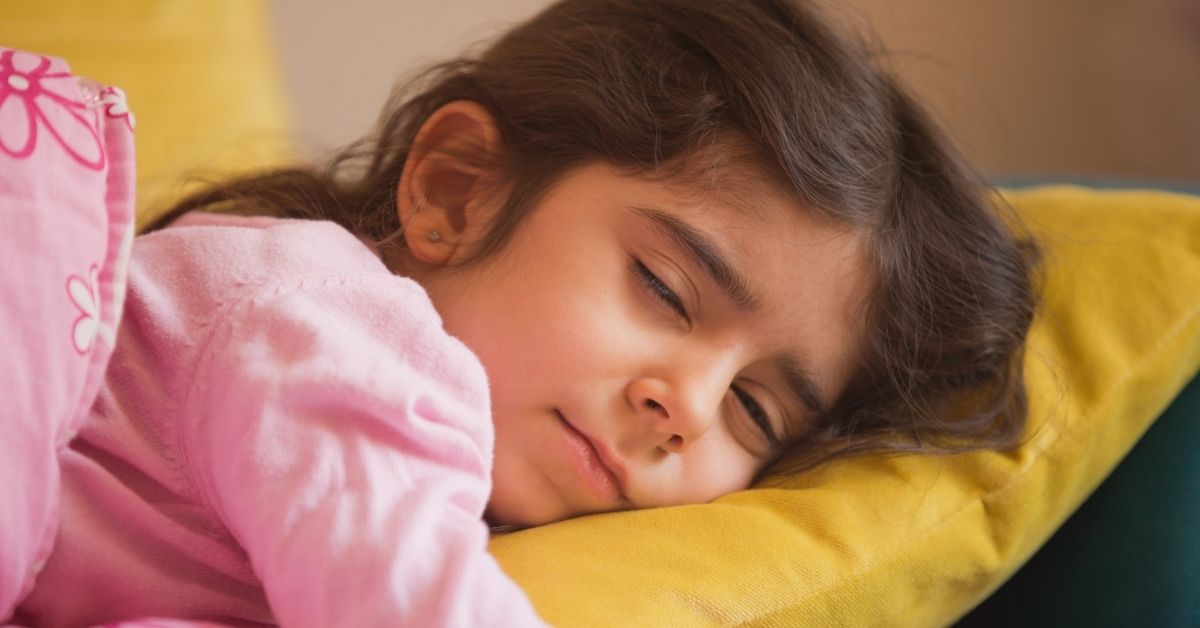

School Involvement
A child’s doctor can provide a letter to the child’s school to explain a headache diagnosis and treatment plan. In the United States, a child’s school and teachers can work with parents and caregivers to create what is called a 504 plan.
This plan will help the child manage headaches at school without help from parents. The plan can include permission for children to keep their own medicine (if appropriate), to have access to water during class, and to rest during a headache.
Secondary Headache
For secondary headaches, it is most important to treat the problem causing the headache. For example, if the headache is caused by infection, then the infection needs to be treated. In the meantime, over-the-counter or prescription pain medicines can be used for the pain.
OUTLOOK
Most headaches do not seriously affect a child’s function at school or play. Tension headaches usually affect function less than migraine headaches. But if either type of headache is very frequent or severe, it can start to cause problems. If untreated, this can eventually cause severe disability and affect the whole family.
This is why it is important to work with a child’s doctor to come up with an effective treatment plan as soon as possible. Headaches can become more difficult to control the longer they go untreated. In addition, studies have shown that early treatment leads to a better lifelong outcome.
Headaches are common throughout life. Many people notice that headaches are not as serious or frequent in adulthood. Still, most people will have headaches at least every so often in adulthood. An effective treatment plan can reduce the impact of these headaches on a person’s daily function.


Resources
ORGANIZATIONS/GROUPS
The mission of the National Headache Foundation is to cure headache, and to end its pain and suffering. In support of that mission, the NHF looks to achieve these key goals:
- Advocacy – Represent the headache sufferer in efforts with the public, insurance providers, and governmental agencies.
- Awareness – Increase public awareness regarding headache and its impact on the individual, their families, and society.
- Education – Serve as the premiere resource by providing information to patients, health care professionals, and the media.
- Research – Support research into the potential causes of headache disorders and treatments.
Please see the Children’s Headache Disorders page and Pediatric Headache for information specific to children.
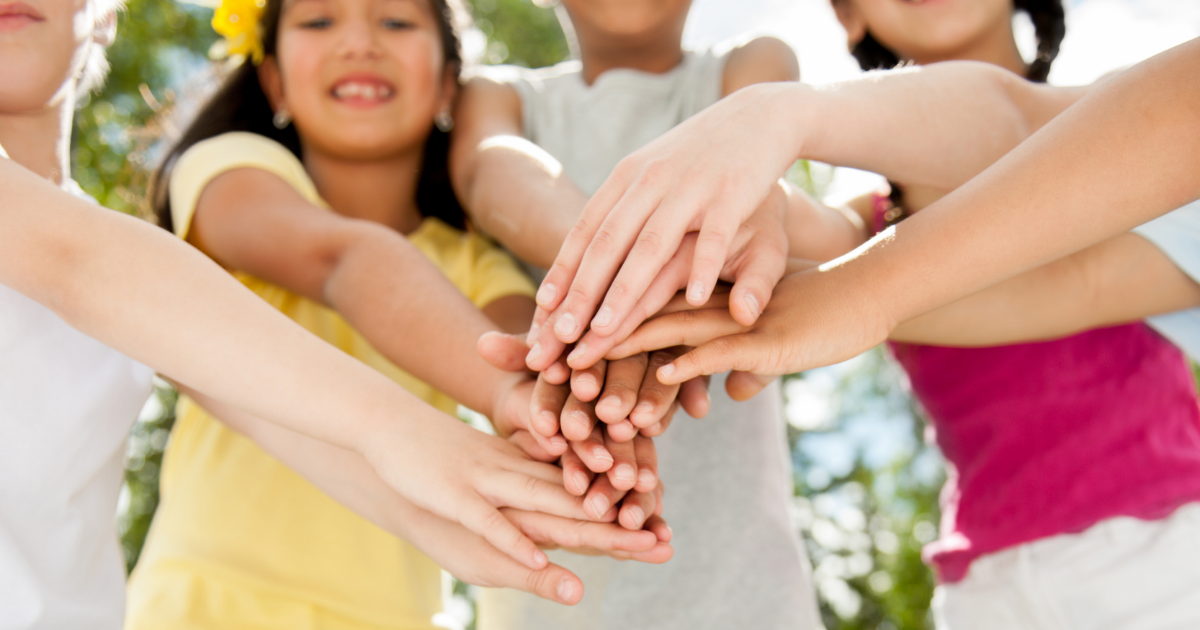

Coalition for Headache and Migraine Patients
The mission of the Coalition for Headache and Migraine Patients (CHAMP) is to improve the lives of people with migraine, cluster, and other headache diseases by aligning coalition organizations and empowering patient voices. Exploring treatment, navigating insurance options, and connecting with others can all be found on their website. For students, parents, and teachers learn about resources through the Migraine at School program.
Headache doctors created the Headache Relief Guide website to help teens and their families to gain better control of headaches, get appropriate medical care and limit the disability caused by headaches. The website provides resources, education material, ways to control, share your experience, and prepare for headaches.
PUBLICATIONS
JCN: What Your Pediatric Neurologist Wants You to Know – Headaches
Podcast from SAGE Neuroscience and Neurology/Journal of Child Neurology (JCN). JCN’s Residents and Fellows Board Director, Dr. Alison Christy, interviews Dr. Samantha Irwin of UCSF on headaches.
Child Neurology Foundation (CNF) solicits resources from the community to be included on this webpage through an application process. CNF reserves the right to remove entities at any time if information is deemed inappropriate or inconsistent with the mission, vision, and values of CNF.
Research
ClincalTrials.gov for headaches are clinical trials that are recruiting or will be recruiting. Updates are made daily, so you are encouraged to check back frequently.
ClinicalTrials.gov is a database of privately and publicly funded clinical studies conducted around the world. This is a resource provided by the U.S. National Library of Medicine (NLM), which is an institute within the National Institutes of Health (NIH). Listing a study does not mean it has been evaluated by the U.S. Federal Government. Please read the NLM disclaimer for details.
Before participating in a study, you are encouraged to talk to your health care provider and learn about the risks and potential benefits.
The information in the CNF Child Neurology Disorder Directory is not intended to provide diagnosis, treatment, or medical advice and should not be considered a substitute for advice from a healthcare professional. Content provided is for informational purposes only. CNF is not responsible for actions taken based on the information included on this webpage. Please consult with a physician or other healthcare professional regarding any medical or health related diagnosis or treatment options.
References
Hershey AD. Pediatric headache: CONTINUUM: Lifelong Learning in Neurology. 2015 Aug;21:1132–45. https://doi.org/10.1212/con.0000000000000197
Gelfand AA. Pediatric and adolescent headache: CONTINUUM: Lifelong Learning in Neurology. 2018 Aug;24(4):1108–36. https://doi.org/10.1212/con.0000000000000638
Kacperski J, Kabbouche MA, O’Brien HL, Weberding JL. The optimal management of headaches in children and adolescents. Ther Adv Neurol Disord. 2016 Jan;9(1):53–68. https://doi.org/10.1177/1756285615616586
Szperka CL et al. Recommendations on the use of anti-CGRP monoclonal antibodies in children and adolescents. Headache. 2018;58:1658-1669. https://doi.org/10.1111/head.13414
Thank you to our 2023 Disorder Directory partners:
